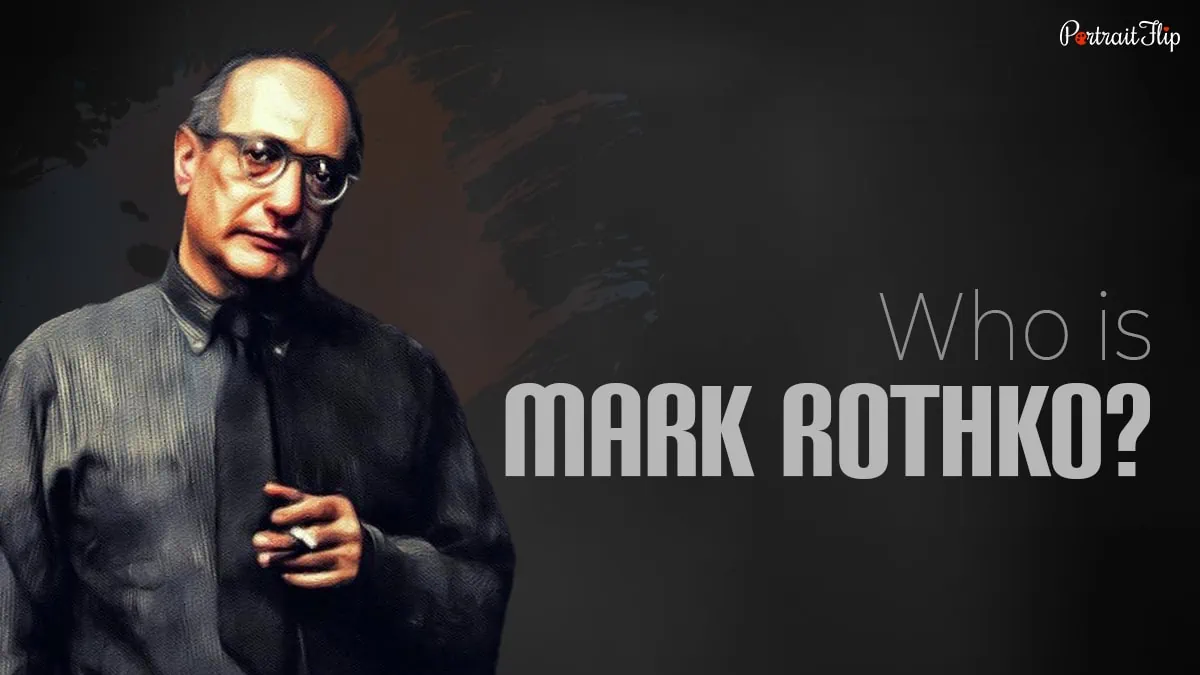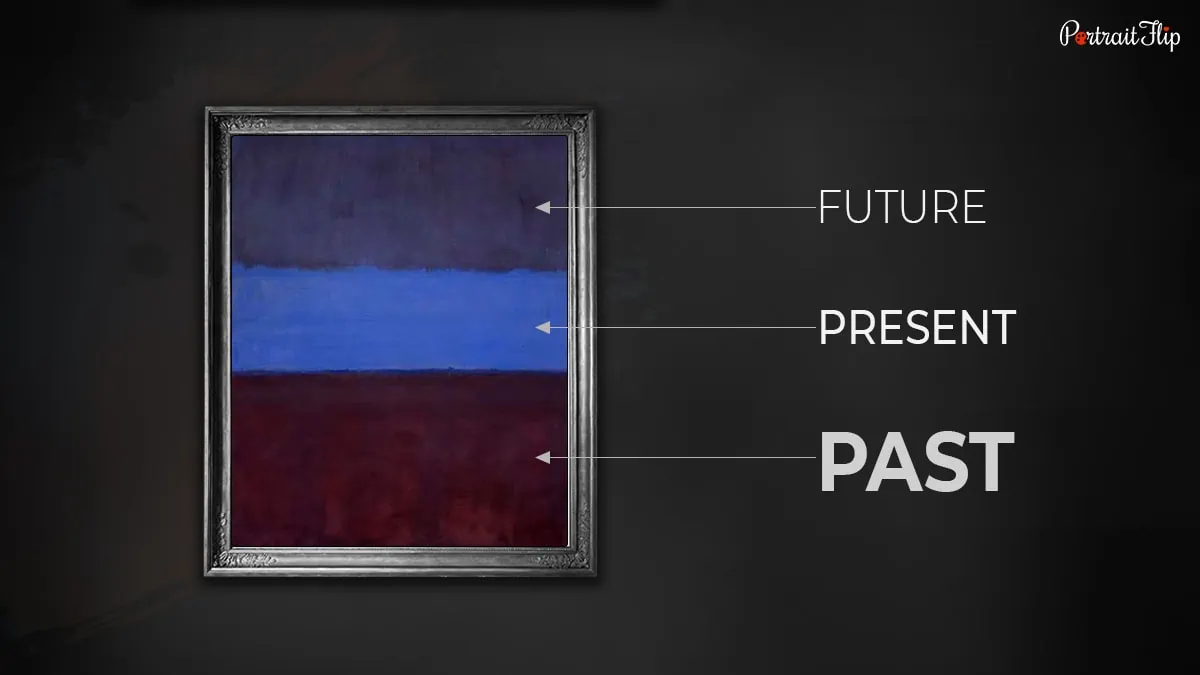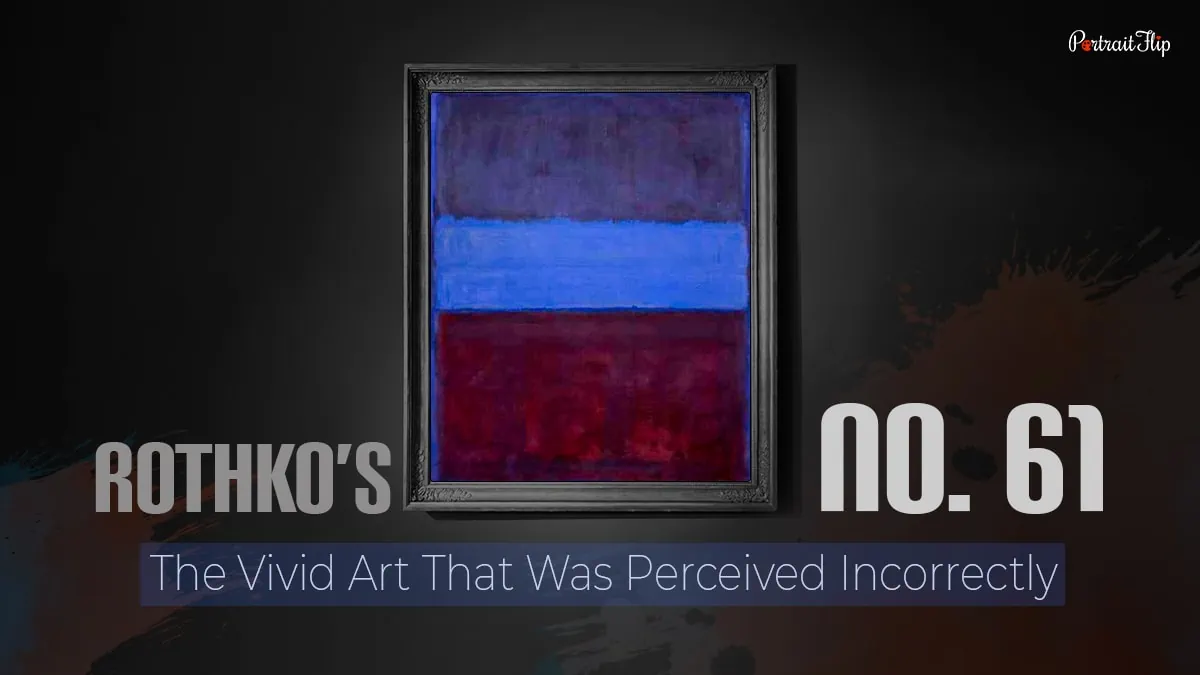If you see Mark Rothko’s artworks, you’ll perhaps doubt his artistic career and question the painting style he was into.
Mark Rothko’s paintings were full of vivid hues and rectangular panes.
Some of them even brought tears to viewers’ eyes when they first observed them.
But how did artworks with hazy shades and indistinct lines make the viewer emotional?
Isn’t it strange? Because if you look at it, you may consider it the creation of a 12-year-old painter.
What’s fascinating and meaningful about it?
The reason that makes Rust and Blue painting a valuable piece of art is its history and the art movement it was associated with.
Of course, the painter of No 61 deserves to be applauded, as he went through thick and thin to give birth to it.
To summarize his ability in simple terms, Mark Rothko was one such talented colorist whose passion, skills, and interests were exemplified in No. 61 artwork.
No. 61 by Mark Rothko unlocks the emotional power of colors.
Popularly known as Mark’s Rust and Blue, it encapsulates the color field movement, which we’re going to talk about in-depth in this blog.
Importantly, you’ll learn more about Mark Rothko’s unwavering passion for color and composition and what drove him to create No. 61 (Rust and Blue).
Table of contents
Who is Mark Rothko?

Mark had a rewarding career spanning five decades in which he experimented with various styles and discovered new forms of abstract painting.
The creator of Rust and Blue, Mark Rothko, was born in Daugavpils in 1903. He was the youngest and most beloved child in the Rothko family.
Mark Rothko was known for creating urban scenery and displaying the aftermath of World War II.
He would draw scenes and events that highlighted the issues and tragedies that occurred due to the war.
Mythological themes and surrealism were his common routes to express his views and the pain endured by the people.
Speaking of Mark Rothko’s childhood, he was forcefully moved to Portland, and the one who was responsible for it was his own father. Out of fear of his son getting drafted into the Imperial Russian army, his father took them to Portland.
He had a rough idea about art, but his artistic journey officially began when he moved to the United States from Portland.
The country welcomed him with open hands and offered many opportunities his way, which led him to collaborate with like-minded people and learn from experts.
Mark was a firm believer in performing smaller things that create more impact than bigger things.
Under the tutelage of several renowned painters, Mark expected nothing but encouragement and progress.
Mark was even fascinated and driven by the Surrealist painter Paul Klee and by the work of Georges Rouault.
In the United States, he worked under several artists’ guidance who became muses for a lifetime.
Mark Rothko’s artworks have features that pay close attention to color, shape, balance, depth, and composition.
Rothko’s life changed for the first time when he saw some students sketching and drawing while visiting a friend at the Art Students League of New York.

This drove him to enroll himself at the Parsons School of Design, which turned out to be the best decision of his life as it opened several opportunities.
No. 61’s creator, Rothko, learned a lot from his mentor and renowned Cubist painter, Max Weber. He also taught him how to view art as a tool of emotional and religious expression.
In the 1940s, the artist discovered the color field movement and became fascinated with it, resulting in his producing rectangular color forms that lasted till his last breath.
But what exactly was color field movement, and how did it help Mark Rothko paint No. 61 (Rust and Blue)?
What is Color Field Movement?

You won’t believe that Mark Rothko was one of the three painters who helped develop the Color Field movement.
He may have denied or rejected the claim that was about his association with the color field movement, but he consistently used its theme and styles, as you could clearly notice from No. 61 (Rust & Blue).
The color field movement wasn’t like or near any action painting. But it was more about vibrant hues and rectangular compositions, completely abstract and contemplative.
The art style was uncanny; who pours paint onto canvas and brushes through it in order to create an emotional response from the viewer?
The practitioners of the color field received heavy criticism. Art lovers even mocked them for their thoughts and ideas.
Mark Rothko was one such victim who bravely diverted his mind from criticism and focused on his own growth.
Over a decade, the movement saw several transitions and advancements, and its leading artists began using large blocks of color and more vibrant hues.
In 1953, Mark Rothko’s blue painting (popularly known as Rust and Blue) came into existence and, in record time, became the finest piece of color field art.
Suggested read: Rothko’s White Center (Yellow, Pink and Lavender on Rose)
No. 61: (Rust and Blue) Composition & Analysis
Without a doubt, Mark Rothko’s No. 61 was an unreal artwork. Here’s why:
No. 61 encapsulates three-time phases and offers intense, cumulative, and bloomy experiences you have never witnessed in abstract painting before.
There are three layers of hues in No. 61, mainly blue, burgundy, and purple blue.
The burgundy at the bottom looks glossy and forceful, and if you look closely, it moves steadily upward.
The patchy darkness at the bottom surrounding the three layers is said to denote pain and hollowness.
All three colors represent different time periods—past, present, and future.

The black borders show the inclusion of darkness and insecurity in Mark Rothko’s life.
Moving to the middle part of No. 61, the color blue signifies Mark Rothko’s hard work and effort. The unbroken strip of blue talks more about the viewer’s past and himself while making No. 61.
It basically intersects with the past, which represents his and his viewers’ pain before the creation of Rust and Blue.
The bottom line is that our present is connected with the past, and the point is perfectly reflected in No. 61, making it more intense and worthwhile.
You’ll be amazed to know why Mark Rothko colored the top layer gray in Rust and Blue. The color gray indicates blurred, foggy, and unclear perspective, meaning that anything can happen, yet you can figure it out to some extent by introspecting on your past events.
Metaphorically speaking, I’ll probably compare it with an unexpectedly uncontrolled wave that gives signals or hints before it occurs.
Our present is the result of our past, and what we do now determines our future.
The painter Mark Rothko took this thought seriously and diligently presented it through art.
Conclusion
No. 61 is criminally underrated. It isn’t a canvas with black borders and three-layered hues; it’s more than that.
Mark invested his years of wisdom and experience in the art, which has a deeper meaning than it appears.
Only a few people understood the artist’s thought process behind it, as the style was uncommon in that era.
As aspiring painters began studying and imitating it, the world started showing interest in it, and embracing this new form of abstract art. Therefore, Rust and Blue received a mixed reception.
It even took nearly a decade to make it to an art exhibition.
The first time No. 61 appeared in the exhibition was in 1961 at the Museum of Modern Art. Currently, it is in the collection of the Museum of Contemporary Art, Los Angeles.
Remember, an art piece like this is always an asset, and its owner will never put it on sale. Mark produced several pieces that are worth millions of dollars; unfortunately, they can never be sold.
However, you can have its replicas made and mounted at your favorite places.
By the way, it doesn’t cost you a fortune; with some dollars, you can have it made by us.
Here’s how you can…
Frequently Asked Questions
The famous painting by Rothko was created in 1953.
No. 61 was an abstract piece of art, heavily influenced by the Color Field Movement.
No. The No.61 painting wasn’t an action painting. However, it was more about vibrant hues and rectangular compositions, completely abstract and contemplative.
The color blue, burgundy, and purple blue are the three main colors in No. 61 painting.
Rothko’s Rust and Blue is in the collection of the Museum of Contemporary Art, Los Angeles.



